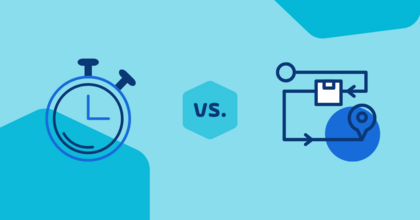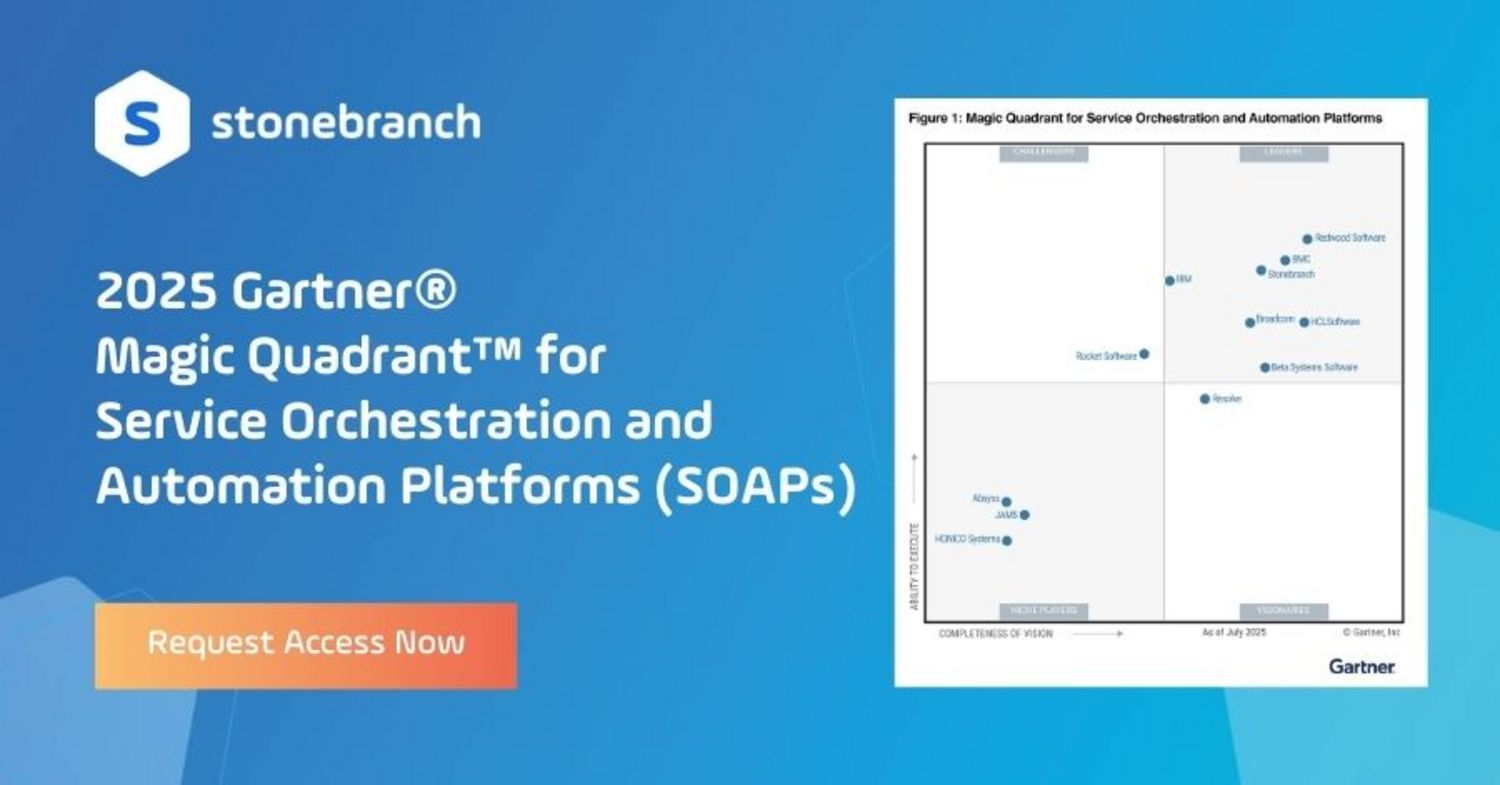Static vs Dynamic IT Automation and How They Work Together
How traditional job scheduling and workload automation concepts can come together to automate processes across the entire enterprise, regardless of environment.

Workload automation (WLA), or the automation of essential IT and business processes across an enterprise using software, offers users many benefits, including simplified management of the enterprise IT operations and better error and failure monitoring. WLA enables IT Ops to dynamically orchestrate business processes across disparate environments using an event-based or real time model, also known as dynamic IT automation.
When examining dynamic IT automation as the new frontier of digital business, it is important to distinguish it from its predecessors in terms of most common applications.
Let’s have a closer look at both static IT automation, also known as job scheduling, and dynamic IT automation, also known as modern Workload Automation. This article will help you better understand their benefits, differences, and how they can work together across an enterprise.
Automation Origins
The first form of IT automation is batch processing, a procedure by which computers automatically complete batches of jobs in sequential order with minimal human interaction. Routine business processes involving large volumes of data, like monthly billing and for weekly payrolls, are examples of batch processing jobs. Traditionally, batch processing was performed at night to ensure that the mainframes and computing power were made as available as possible for optimal performance. After batch processing came classic job scheduling, created in conjunction with IBM mainframes to automatically process huge amounts of data in sequence. Job schedulers essentially manage business processes by referring back to certain data, such as calendar entries, certain times, and dates, to run background processes with the help of an IT administrator.
Although both batch processing and job scheduling simply required the identification of an external factor in order to run, such as the time of day, these early forms of IT automation still required frequent human intervention and manual work. A regularly scheduled payroll process, for example, would need to be manually intercepted and re-distributed if it happened to fall on a day when the process could not be approved, such as a national holiday. Additionally, job scheduling did not have the ability to perform processes across disparate IT environments, leading to silos and inefficiencies across the organization. Static automation’s reliance on manual work and complex monitoring meant that IT operations teams were consumed with their management.
Enter, Workload Automation
With the introduction of decentralized IT systems such as Unix and Windows, requirements for automation changed substantially. Job scheduling thus evolved into Workload automation (WLA). Early workload automation solutions performed an essential role for coping with these new environmental and system requirements, orchestrating automation of business-critical processes, systems and applications across environments. Just like job scheduling, WLA is a solution that is capable of automating background processes. In contrast to job scheduling, however, WLA automates entire business systems, including heterogeneous server environments.
Ultimately, WLA evolved into its current dynamic form, allowing for processes to be based entirely on external event-based triggers of various kinds, many of which are customizable.
What is Dynamic Automation, and Why Adopt It?
Dynamic WLA, or dynamic IT automation, effectively integrates available platforms and applications across a hybrid IT environment. By centralizing the management of automated workloads across on-premise, private cloud, and public cloud services, enterprises are now able to orchestrate an intelligent decision-making process for IT automation. This is made possible by, for the most part, the absence of dependencies on fixed dates and events. Rather, workflows are scheduled based on event-based trigger activities to drive a real-time business.
Event-based triggers come in many forms. Event-based triggers in automation are various actions taken by users or end users that trigger automatic reactions by an IT automation software to either start, stop or change a process. One type of event-based trigger is a data supply chain event. An example of this type of trigger would be a certain type of data becoming available in a specific environment. The input of new data could be set to trigger the scheduling, analysis and delivery of that data from its origin to its final destination, regardless of whether that destination is on the mainframe or in the cloud.
Another type of event-based trigger is ERP automation. ERP software like SAP manage enterprise wide business processes. These processes can be automated seamlessly across the entire IT landscape through event-based triggering. One example would be the onboarding of a new employee. When that new employee’s account is created within a certain department and assigned a certain role, a workflow can be automatically triggered that creates accounts in the relevant systems for that new employee, and sets their accounts have to certain permissions and levels of access appropriate to their title and department.
Dynamic IT automation supports a combination of distributed and cloud technology to realize real-time event-triggered automation with cycle times of hours, as opposed to weeks. This enables small and agile teams to work more proactively and at a faster pace. Ultimately, the purpose of dynamic automation is the holistic planning, realization, control and continuous improvement of all essential processes and resources in connection with IT services.
How WLA Brings Static and Dynamic IT Automation Together
All the essential tasks of job scheduling can now be made dynamic by being automated across different platforms and applications. Other common use-cases that provide strong arguments for dynamic automation include event-triggered managed file transfers to help automate your data supply chain, and the automation microservices to support infrastructure management.
One third of today’s workloads still run on mainframes. However, nearly half of today’s IT workloads have the potential to be optimized using a dynamic approach. As regulations continue to tighten and complex interdependent business processes become the norm, organizations will increasingly accelerate digital information optimization. In transforming, these companies will thus free themselves of the limitations of static IT automation in favor of flexible, intelligent and orchestrated dynamic IT automation with real-time data orchestration.
Start Your Automation Initiative Now
Schedule a Live Demo with a Stonebranch Solution Expert






